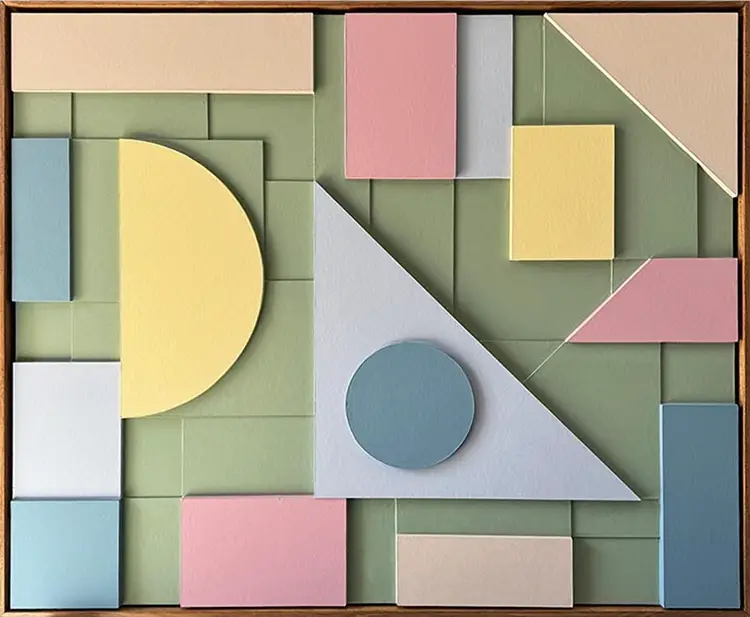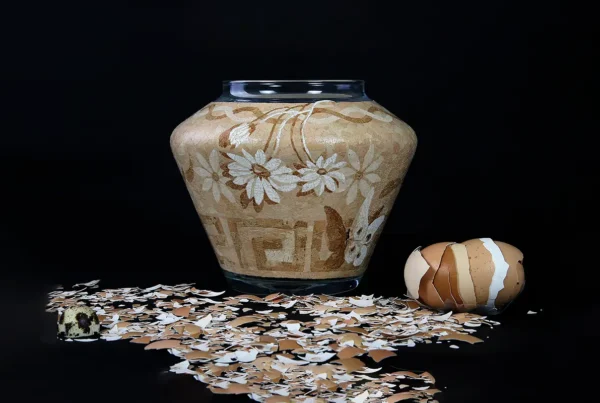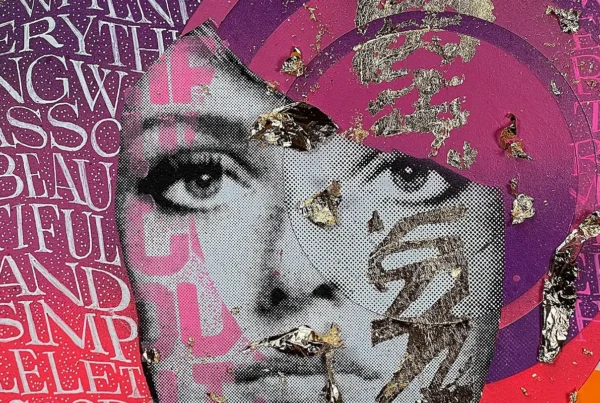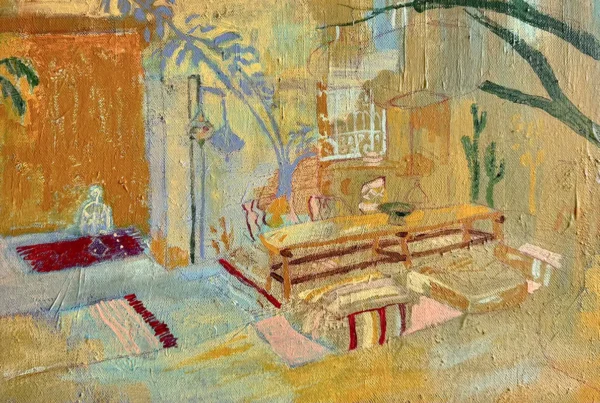Geometries in Motion: Where Shadow Shapes the Story
Nestled in the tranquil landscape of Cambridgeshire, British artist Sean Thornhill crafts architectural reliefs that shift and shimmer with the day’s changing light. From the heart of his garden studio, Thornhill orchestrates a quiet but compelling spectacle—layered compositions where geometric precision meets sculptural elegance. His artworks, infused with a profound sense of spatial awareness, evolve as natural light traces across their surfaces, revealing subtle shifts in shadow and form. It is this temporal dimension that defines his creative identity: a fusion of design, structure, and a deep attentiveness to the passage of time.
Sean’s artistic journey is rooted in a diverse background that includes a BSc in Product Design and a National Diploma in Art and Design. Before fully dedicating himself to his art practice, he worked as a freelance designer for clients such as Disney, developing visual graphics across a broad range of products. This design experience laid the groundwork for his current process, where precision and balance are fundamental. His creative transformation began when traditional printmaking methods felt too loose for the vision he sought. It wasn’t until he began cutting and layering card materials that the defining aesthetic of his work took shape—an epiphany sparked by the accidental stacking of print plates, which inspired his layered relief approach.
What followed was a complete immersion into a discipline that bridges fine art and structured design. Thornhill’s pieces reject superfluous detail in favor of refined simplicity. Influenced by Bauhaus rationalism, Brutalist architecture, Scandinavian purity, and mid-century design, his work demonstrates how minimal elements—circles, squares, lines, and blocks—can be orchestrated into compositions that speak with powerful clarity. His style is not merely minimalist; it’s intentionally reductive, exploring how form and space can be manipulated to create rhythm, balance, and visual dialogue.
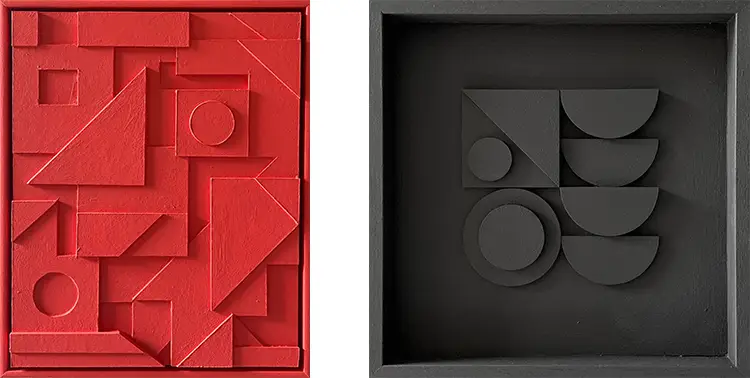
Sean Thornhill: Crafting Silence Through Structure
Each artwork by Sean Thornhill begins as a digital concept, mapped out using vector software that allows him to explore complex configurations with absolute precision. This digital foundation is more than a technical step—it’s a conceptual framework that echoes the Bauhaus ethos of integrating technology with artistic intention. From these digital renderings, he constructs scaled prototypes, treating them as three-dimensional sketches to examine balance, layering, and visual weight. These early models guide him toward a final plan drawing, which serves as the blueprint for the completed artwork.
Once the design is finalized, Sean enters a methodical production phase where technology and handcraft intersect. Using either a craft blade or a laser-cutter, depending on the complexity of the forms, he brings each element into being with acute attention to accuracy. This fusion of machine logic and manual labor gives his work a duality that’s both contemporary and deeply human. Every component is cut, painted, and assembled by hand, resulting in a visual language that is consistent and controlled, yet retains the nuances of craftsmanship. His compositions range in tone from stark monochromes to rich color blocks—ultramarine, deep greens, cadmium reds—each palette chosen to emphasize structural clarity rather than decorative appeal.
The result is a body of work that operates like a quiet architecture for the wall. Sean doesn’t rely on narrative or figurative content; instead, he allows space, volume, and light to tell the story. Each relief captures the slow choreography of shadows, offering viewers a visual experience that unfolds over time. This dimensional aspect encourages reflection, urging the eye to follow each edge, each corner, as light transforms the surface hour by hour. In this way, Thornhill’s pieces become living works—never static, always becoming.
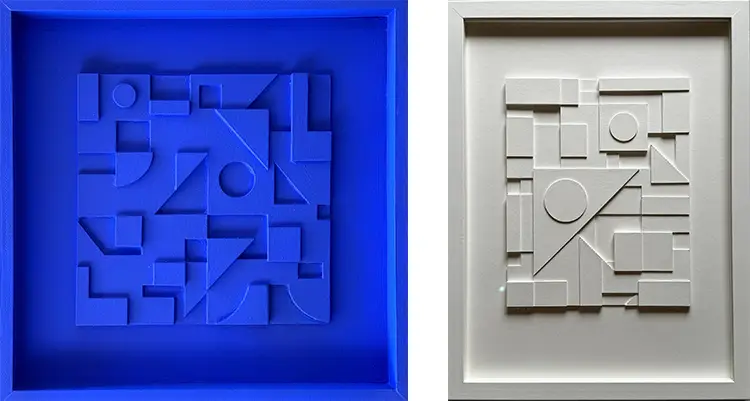
Design as Discipline: The Rhythm of a Studio Practice
A day in Sean Thornhill’s studio is marked by repetition, structure, and a quiet kind of ritual. His work life begins around 8:30 each morning, when he steps into his studio at the end of the garden. Rather than concentrating on a single piece from start to finish, he prefers to keep several works in progress simultaneously. This system allows him to shift between stages—cutting, painting, assembling, or framing—depending on the materials at hand and the mental focus required. This rhythm keeps his creative process fluid, allowing him to remain responsive to ideas while maintaining technical control.
This iterative approach is key to the way Sean refines his ideas. By staying in motion between artworks, he is able to test how variations in composition, layering, or color play off one another. It also allows for an organic flow of ideas from one project to the next, where visual motifs can be expanded, deconstructed, or refined. His consistency in style is not restrictive; rather, it represents a deliberate choice to stay true to a visual language that he continues to develop. The tension between repetition and invention gives his work both coherence and vitality, which is why his reliefs and prints resonate so deeply in both gallery settings and modern interiors.
Sean’s commitment to this aesthetic discipline has resulted in notable opportunities. His work has been exhibited in acclaimed venues such as The Conran Shop in London’s Sloane Square—a particularly meaningful moment given his admiration for Terence Conran’s legacy. He was also commissioned to create a 6-meter by 2-meter wall installation for the AC Hotel by Marriott in Glasgow, a project that required translating his intricate style onto a much larger scale using new materials and installation techniques. These projects underscore the adaptability of his vision, which retains its integrity whether presented in intimate spaces or expansive commercial environments.
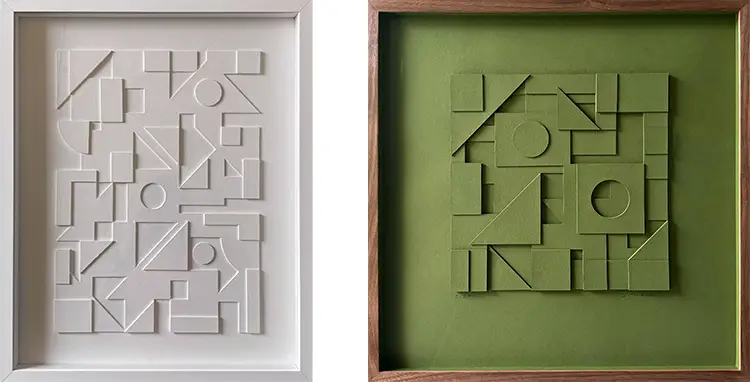
Sean Thornhill: Where Print and Sculpture Converse
While Sean Thornhill is widely recognized for his sculptural reliefs, his exploration of printmaking reveals another dimension of his artistic inquiry. His prints—whether screen-based, block-printed, or embossed—carry the same visual ethos as his three-dimensional work, but translated into flat planes. This dialogue between surface and depth allows him to explore how geometry and color behave without the influence of shadow. These graphic works serve as both companions and counterpoints to his reliefs, emphasizing form through contrast and negative space rather than physical layering.
His print work draws heavily from Scandinavian clarity and mid-century design sensibilities, where bold shapes and deliberate color choices define the composition. Rather than decorative gestures, his prints present a stripped-down graphic precision, focusing on how elements interact spatially. Often shown alongside his reliefs, they establish a visual conversation that highlights how two-dimensional surfaces can still carry spatial implications. This interplay deepens the viewer’s engagement, prompting questions about what constitutes volume, presence, and depth.
Social media, particularly Instagram, has become a powerful platform for Thornhill to share both his prints and his reliefs. By posting short videos that reveal the stages of his process—from digital sketch to final installation—he opens a window into the construction of his visual language. These process-driven glimpses don’t just showcase the finished product; they emphasize the craft, the decision-making, and the precision that defines every piece. For Sean, making art is not about grand gestures or singular masterpieces—it’s about building a sustained, evolving practice where each piece speaks to the next, and where every composition is an invitation to slow down and look more closely.
